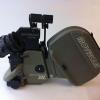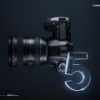Leaderboard
Popular Content
Showing content with the highest reputation on 01/19/2014 in all areas
-

RED cameras absent from all Oscar cinematography and best picture nominees
Ben Prater and 4 others reacted to Sean Cunningham for a topic
Captain Phillips seemed to have the most disparate use of cameras. Quickly skimming the Nov'13 ACM it appears they used Super-16mm (Aaton) shooting on the water, especially for the Somali only parts of the film, in the skiffs. Being so remote without support they didn't trust digital for this kind of shooting. As soon as the Somalis step onto the boat and Tom Hanks' portion of the story starts it switches to 3-perf 35mm. For the arial stuff showing the extremities of scale they shot Alexa. GoPros were used to capture the SEAL parachute drop. VistaVision was used for VFX plates. They don't mention the C300 at all in the article, nor do they list it at the end, so I'm betting it's inclusion above is mostly about marketing. Wolf of Wallstreet was split 4-perf 35mm and Alexa to ArriRaw. Here again the filmmakers went with different shooting styles for different stages of the narrative, mainly with different optics, lighting and color. Depending on the character's state of mind they shot either spherical Arri Master Primes and the Hawk anamorphics, heightening DiCaprio's mania by shooting a lot with the 35mm and 28mm anamorphics, switching to spherical when his state of mind is more clear and precise. For DiCaprio's "quaalude look" they shot 20mm on an Alexa at 12fps with 360 degree shutter, then step-printed to resample back to proper time. And a prototype C500 was used by the second-unit/VFX to shoot ariel photography. It was small enough they could rig it to the nose of an RC Octocopter. The RC copter was necessary because the location in Long Island didn't allow full-size choppers as well as allowing them to get shots that would have been impossible with a full size chopper.5 points -
Would have been quite funny if Upstream Color was nominated.2 points
-

RED cameras absent from all Oscar cinematography and best picture nominees
mtheory and one other reacted to Sean Cunningham for a topic
While the Academy itself is all about politics, which is the only reason I can think of why both Only God Forgives and To the Wonder are missing from Best Cinematography, the Arri cameras are being picked by DPs because that's what they want to shoot on, for a variety of reasons that have nothing to do with politics. This is also the first year where a majority of the nominees are digital origination versus film, 3:2 where last year it was 2:3 and the year before it was 2:3 as well (with one RED film, The Girl With the Dragon Tattoo, and one mostly film with some RED b-cam, Tree of Life). A lot of European DPs prefer Arri cameras just in general and then you add to that the Alexa's more immediately pleasing, baseline output which is less dependent on DIT support, post, etc. Let's see what Cronenweth Jr. and Fincher can get in there for next year though.2 points -

RED cameras absent from all Oscar cinematography and best picture nominees
Rolf Silber and one other reacted to Sean Cunningham for a topic
For Her, they initially discussed shooting 35mm during the day and Alexa at night but Jonze liked the way the Alexa looked in daylight as well, stating it "has a really beautiful creaminess that worked great for this movie." Like the other films, they altered the look of the photography depending on what was happening, with specific lenses for flashback, high speed and everyday, including the DPs own set of uncoated Cooke Panchros and an old set of Zeiss Superspeeds and a Canon K35 zoom specifically for its flare. It was a really tight budget with a tiny crew. The ACM article makes no mention of any specific instance where the C300 was used. I haven't seen the film yet but I'm betting, being they shot in LA, on location, with almost no money and a tiny crew, it was used to impromptu steal a shot or location discretely or just get a camera crammed somewhere the Alexa was just too big to go.2 points -
Panasonic G6 music video / Coely "My Tomorrow"
tosvus reacted to Pascal Garnier for a topic
Shot with a Panasonic G6. "Natural" Profile with everything dialed down to -5. Steadicam shots with a Pana 14 2.5, all other footage with Canon FD's.1 point -

RED cameras absent from all Oscar cinematography and best picture nominees
Aussie Ash reacted to Rob Bannister for a topic
none of it is really 4K, 2K upres mostly and HD. Elysium was 4K and then upres to 8K for Imax. Only a handful of studios here in the city can even handle 4K. We have renders for TV that tke 8hrs a frame to render in HD. SO take a shot that is 30F to 300 frames long...and usually if its 300 frames long its some epic explosion with tons of pieces.....put 4K and STUPID STEREO into the mix and then 48 or 60FPS. its getting ridiculous. I prefer 2K 2.39:1 with some nice film grain to it for texture with a great story any day.1 point -

RED cameras absent from all Oscar cinematography and best picture nominees
Aussie Ash reacted to Sean Cunningham for a topic
It's not yet common. Some directors insist and have enough juice to pressure production to fork over the substantial budget increase both 4K VFX and DI will cost them. Prior to the phenomenon of IMAX presentation for non-educational films 4K was more common for anamorphic films where that's considered rather minimal quality for anamorphic. I would be really surprised if more than 10% of big VFX films are being posted at 4K and certainly less than 20% right now. That's up from hearing about the one or two films a year requiring 4K post just a few years ago. The shift to DCP already gave a resolution boost to 2K finish over general release print quality, commonly considered worth about 1K thanks to all the optical steps. If you've ever seen first-gen prints straight off a neg projected big and beautiful you cry at how much is just gone by the time it hits the multiplex. This is a big reason why the death of film as an acquisition format is far too premature, regardless of how good any digital camera is, because DCP of analog origination is the best looking digital presentation going. Similarly, digital origination looks nice® when printed to film and optically projected. It would be interesting to see experiments with digital origination, print to neg and then scan that negative for DI and eventual DCP. Anyhow, yes, I was surprised to read someone had busted out the VV. They must be doing pan/zoom or perhaps some tricky projections where the extra resolution is desirable above working from a 4K 4-perf scan. It's maybe a little overkill if they're using it for an Alexa section. CG itself, regardless of standard practice, doesn't need to be rendered to your target, working resolution because we tyipically work at 4x to 8x oversampling. You have further shading and geometric oversampling if you're using a REYES style micro-polygon renderer (Pixar's Renderman implementation, prman, or SESI's Mantra renderer being the most common) where, nominally, if you were to only do a 1x spatial sample you would still have four micro quads shading beneath each pixel. Straight raytracers commonly have even more oversampling thrown at them as they're prone to spatial aliasing but there's decades of research into techniques like poisson disc sampling and other stochastic techniques striving to improve results while lowering computation because noise is less distracting and more aesthetically pleasing (and more consistent with motion picture imagery either analog or digital) than hard, jagged lines.1 point -

RED cameras absent from all Oscar cinematography and best picture nominees
Sean Cunningham reacted to Guest for a topic
I know Drive got a nomination for sound, but I think the academy is overall far too conservative to get behind a Refn film. As for Malick, I guess there are only so many times you can celebrate how beautifully shot his films always are.1 point -

RED cameras absent from all Oscar cinematography and best picture nominees
Rolf Silber reacted to odie for a topic
alexa over red kodak overall1 point -

RED cameras absent from all Oscar cinematography and best picture nominees
Sean Cunningham reacted to mtheory for a topic
I'm surprised at Only God Forgives' ( lack of ) reception in the cinema press too. The silence is deafening...1 point -
RED cameras absent from all Oscar cinematography and best picture nominees
ike007 reacted to Rolf Silber for a topic
Even when shooting with the ARRI "The Fridge" D 20 back in the "old days" the decision to use it instead of a RED was a decision for the aesthetic character of the image, it's "film-likeness", that made people to put up with a camera which was kind of hard to handle concerning size and weight. This concept - stay as near to film aesthetics as possible - was quite efficiently transferred to the Alexa which provides great DR plus excellent colour rendition, especially skin tones. Also Alexa fitted better into the existing workflows. A decisive bit less franken-rigging. Very nice and not overly complicated menues. Sturdy body. And great reliabilty. What befuddles me is that the rental costs of a camera should be a big factor in a major production of a narrative film or even an average one. For a German TV-Movie costs for camera (excluding lenses) is maybe 3% of the budget or even a bit less. The cost-factor should be really only kicking in, when you go small to low budget or your production manager is named Scrooge. Apart from questions of aesthetics - you like or dislike a certain characteristic delivered by a sensor (which really is there or maybe only assumed :-)) - again workflow on set and in post is also cost-wise the decisive factor to take this or that camera. Not rental costs. In the end all a camera is is a tool. And Alexa seems to fit in better under most circumstances for middle to bigger budget productions of narrative films. No miracle here and definitely no "fanboy'ism".1 point -
Good God how awesome a jail broke 1DX would be...1 point
-
A couple more. Red Sox at Fenway. pre-36 iscorama with original 50mm http://bit.ly/19CUueA Cape Cod beach- this one has the full size image- same lens setup- canon 5d markii http://bit.ly/1e1BUZA1 point
-

Why I am going with 4K and why you should too
mtheory reacted to Sean Cunningham for a topic
That's certainly a big reason for why The Hobbit is the biggest offender here. The faster frame rate, even when down sampled to 24P, retains the crispness of the HFR and therefore high shutter footage. But other 4K digital acquisition, at 24P, will still have objectionable aesthetics if you compared side-by-side with film of similar scanned resolution. I'm having a parallel discussion on the subject with some industry colleagues and apparently some vendors actually have been working on the problem and identifying one of the biggest reasons why two images of equal resolution, one film origination and the other digital will almost invariably result in the analog picture being found more pleasing: (* HVS = human visual system) We're designed to detect patterns and edges and the fixed grid of the sensor is the perfect structure to draw our attention. It is also a phenomenon that has both spatial and temporal factors (like the HFR of The Hobbit). Film resolves higher that digital of supposedly similar resolution when you include how we perceive the analog image over time versus the fixed and never changing grid. This is something that Aaton (see the pattern here, Arri and now Aaton) is or was working on with the Delta Penelope: ...this is my first exposure to this project but reportedly they're having problems with the Dalsa sensor. edit: oh, I guess the company is no more. Hopefully something like this will be along the lines of where Arri goes with new cameras.1 point -

Why I am going with 4K and why you should too
mtheory reacted to Sean Cunningham for a topic
And you'd be in the company of a lot of respected DPs that have made the transition to digital. Arri has proven since the introduction of the Alexa that, when it comes to digital, how you fill those rows and columns is ultimately more important than how many rows and columns you're filling. Higher and higher resolution and more and more DR and wider and wider color gamut are all goals the engineers busy working away at Sony or RED understand. They're practical problems with practical solutions, overcome by throwing more and faster engineering at them. These engineers aren't going to create better cameras though. Last night I finally got around to watching Paul Thomas Anderson's The Master and immediately thought about where we were going here. It's almost poetic that this film was released the same year as the first installment of The Hobbit, a shitty looking 4K movie shot on RED. I'm not anti-RED and there are plenty of good looking RED films, this isn't one of them and this film is a good example of what's missing from RED (and Sony's) path. Reading about their workflow, on The Master, it reinforces my feelings that 4K and beyond, with digital cameras, is really a problem for filmmaking, and it's not just about resolution. Nobody has ever complained that 65mm made actors or sets or props or make up look bad. The Master was a mixed 65mm (mostly) and 35mm show, graded photochemically with both print and DCP distribution. They did four separate release finishes for this film, with true photochemical for 70mm and 35mm prints. It's crazy. But for their DI they scanned the 5-perf 65mm at 8K and the 4-perf 35mm at 6K for an eventual 4K DCP finish. More than once I've read, based on DP and colorist commentary, that anamorphic 35mm with a digital 4K finish is considered minimally what you need if you care about preserving most of what's there in the neg, where 2K is an abomination, but 6K for spherical when you're not shooting 8-perf seems excessive by conventional wisdom. Everything I've read over the years about how obsessive P.T. Anderson is over the photography of his films leads me to believe they weren't assigning film this level of resolution unless it warranted it. Every aspect of his acquisition and release methodology was thoroughly tested. My own experience on dozens and dozens of films working with scanned 35mm imagery concurs. Making 4K actually look good with digital cameras isn't something that seems part of the conversation at these electronics shows and soft lenses is the current bandaid but I think it's just that. They're not confronting head on a fundamental flaw in how these sensors are recording reality so discretely and unattractively. Resolution is to blame but film proves this to be false. For the 35mm portions of The Master the emphasis was on the sharpest lenses available, so that the footage cut well with the 65mm. Meanwhile DP after DP are on record choosing reportedly soft lenses, like Cooke S4, for high resolution digital acquisition, otherwise finding the look is harsh and unappealing. Moreover, PT Anderson requires his films be shot on the slowest stocks available, ensuring the smallest possible grain. DP Mihai Malaimare brought his personal 85mm Zeiss Jena for Panavization, the sharpest 85mm he's ever used or seen, and Panavision found a matching set of expanded focal lengths already in their possession. All this emphasis on resolution didn't make the film less beautiful. On the contrary, I can't think of the last time I saw close-ups in a motion picture that inspired this much awe. It was just astounding. And the color. Seeing a film, shot on film, with a photochemical grade that looks this amazing also points out just how over-graded a majority of films are, regardless of the origination. There's a lot of "just because you can doesn't mean you should" sort of observations one could make. All the criticisms levied against The Hobbit and DP after DP working around and against the "edge" of Ultra-HD (some of which, yes, is preserved even in 2K or 1080P reductions), this was never the case with film, shooting with what we know to be higher resolving power than 4K. I think we need to be shifting the conversation away from just the simple number of rows and columns and to how they're being filled. Video engineers did finally get around to giving us the ability to shoot video with film-like gamma curves, finally appreciating that we don't like our movies looking like the nightly news. Now they need to appreciate that 4K+ for movies needs to be different than 4K+ for covering Formula-1 or football.1 point -
I think this is the best example of where you and I differ in our priorities. A Red Epic is cheaper than an Alexa Studio and almost 5 times the resolution on paper. But still, I'd choose an Alexa over the Epic.1 point
-
I'm of the belief that if greater image quality than what can be had from true fullhd from the black magic pocket, or hacked canon 5dmk3 is required, then it's time to hire a camera for the job. The jump in image quality that will be had from anything within reach of consumers is going to be null and void in my opinion. It would take an expert to tell the difference between a hacked 5dmk3 and an Alexa shooting RGB into an external box. Focus on glass is priority IMO. A nice set of Contax Zeiss on a hacked 5dmk3 is gonna literally match or ruin anything else within the budgets of most of us. Full HD cameras are more than good enough nowadays.1 point


